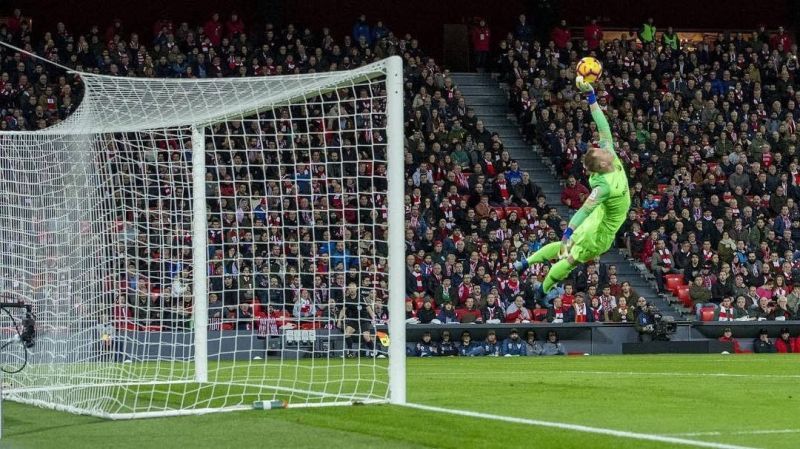
What is a sweeper keeper? - Football tactics explained
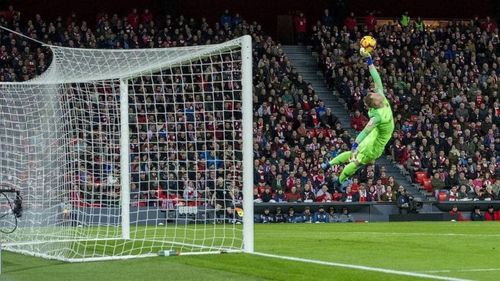
A conventional goalkeeper has been wearing #1 since the inception of the number system. Every team depends on their number one for one primary thing, stop the ball from going past him into the goal. The goalkeeper is the only player on the pitch with the luxury to handle the ball. He is supposed to use his hands to guard the sticks and make breathtaking dives, in order to halt the opposition from scoring. The keeper traditionally stays in his penalty area with the intention of sometimes approaches the attacker to narrow down the scoring angle or sometimes staying behind and hoping to get a hand on the ball.
The sweeper keeper is a completely different mechanism, although the primary task remains the same: stopping the opponent from scoring.
Origination of the sweeper keeper
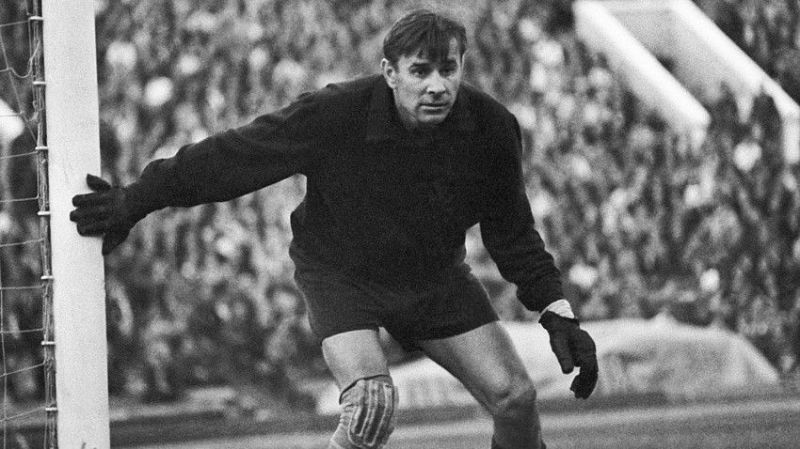
The first sweeper keeper is traced back to the 1800s, unlike many famous tactics that came into existence much later. Leigh Richmond Roose was the world's first ever sweeper keeper who played for various English teams including Everton, Stoke City, and Sunderland in his career. He took advantage of the FA's rule 8 which stated that: the goalkeeper is allowed to handle the ball inside his own half, provided he does not carry it. Roose often bounced the ball till the halfway line before launching attacks.
In 1912, rule 8 was restricted to only the penalty area and by that time Roose retired from football. Lev Yashin and Gyula Grosics, two of the greatest goalkeepers of all time, were genuinely good with their feet. Yashin was also known for long throws that used to kickstart counter attacks.
What is a sweeper keeper?
Speaking in simple words, a sweeper keeper is a goalkeeper who pushes himself up the pitch and stays close to the last line of defense. The Godfather of football Johan Cruyff had famously said: "In my team, the goalkeeper is the first attacker and the striker is the first defender". In Cryuff's ideology of total football, the goalkeeper is the 11th outfield player of the team should provide passing options to his teammates
How does a sweeper keeper function?
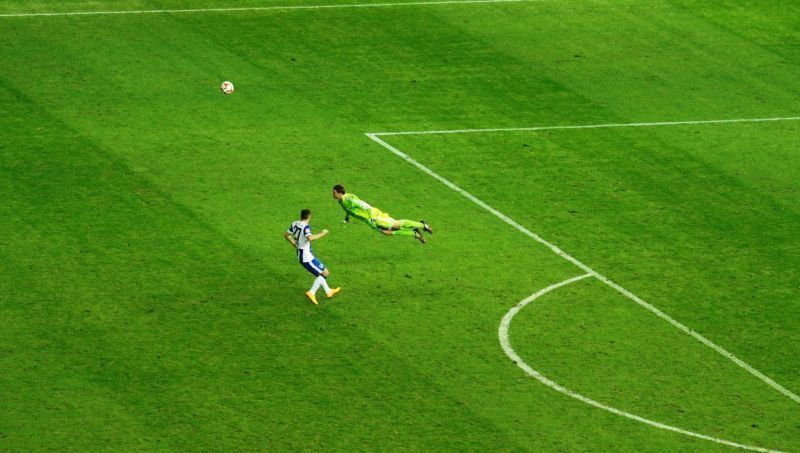
Johan Cruyff's and his student Pep Guardiola's idea of the game is to score by breaking through various lines of pressure. In this type of progressive play, the sweeper keeper becomes an important part of the team. The defending team always tries to press and win the ball in the final third, thus reducing the distance to the goal and having a much direct chance at finding the back of the net.
The only option for defenders under such high pressure; is to hit the ball long and risk losing it to the opposition in most cases. That is when the sweeper keeper comes into play. By leaving his comfort zone and moving up near the defensive line, the keeper provides a passing option to the players and allows them to adjust accordingly or make forward runs to get a pass. If the attacking team presses the goalkeeper, he is expected to deal with the pressure and find a free defender. This gives enough time to start a rapid passing move with the midfield and progress through the defensive third.
The main characteristics of a sweeper keeper are that he should be confident enough to not use his hands and have composure on the ball with his feet. He is usually good at passing and has able distribution skills.
This way, even if the keeper is average or just par with his hands, he could be a devastating part of the team's attacking movement, much like Claudio Bravo was at Manchester City in Guardiola's first season in England.
Both Cruyff and Pep believe in making the pitch as small as possible for the opposition. This meant that the attacker's press first, the midfielders are really close to the to them near the final third and the defenders keep a high line meaning they are usually at the halfway line. The risk in this type of press is quite obvious. One looped ball over the defense and a player could be straight through on goal. In these situations, a sweeper keeper is handy and can deal with the through ball on his own or at least clear the danger of a break. The defense is thus less vulnerable to these balls because of the keeper's ability.
Among other skills mentioned, a sweeper keeper should have awareness about whether to attack the ball or not, be fast and have good interception skills. Presence of mind is also an important quality for sweeper keepers. Sometimes you could chip the ball in front of the attacking player and then pick the pass, sometimes it just isn't the time to try outrageous things and maybe clearing the danger is better. It most certainly is the latter when imposing strikers like Suarez and Benzema are in front.
Players who succeeded as sweeper keepers
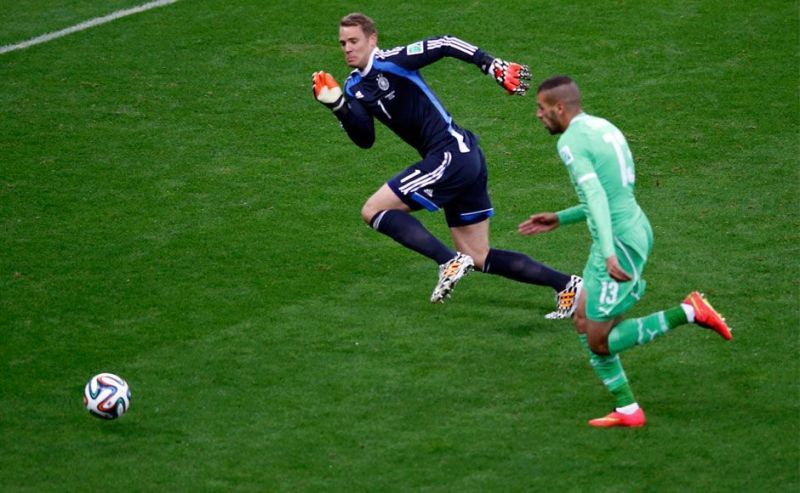
In his prime, Manuel Neuer was one of the best goalkeepers of all time, not only due to his antics with the gloves but also due to the ability to play the ball with his feet. Neuer is also one most outrageous keepers in recent times. At times, people have seen him positioning himself near the halfway line at Bayern Munich and sometimes even getting into the opposition half. He has also shown some brilliant flying heading ability at times. His performance against Algeria in the 2014 World Cup is one of the most memorable goalkeeping display of recent times. He left his box to tackle opposition players, a thing you normally expect from defenders, making him a deserving Golden Glove winner.
Recently, Marc-Andre Ter Stegen of Barcelona has excelled in the sweeper-keeper role. He is extremely good with his feet and is composed as anyone with his passing and distribution. The German is someone who took time to adjust to the role and exposed the weaknesses of the role in his early days. There were instances where he conceded important goals because of coming too far ahead on the pitch. His mistakes against Athletic Bilbao in Barcelona's loss in the 2015 Supercup and also a long-range screamer by Roma in the 2015 Champions League group stages come to mind. Despite those faults, Barcelona did not ask him to stop playing as a sweeper keeper and now he has improved tremendously with his feet and gloves.
Ederson at Manchester City is one of the best sweeper-keepers around at the moment. Claudio Bravo also did that part of his job right in Manchester, although he works with his gloves was far from impressive. Ajax goalkeeper Onana also highlighted what a keeper can do from the attacking aspect with the linkup with Tadic upfront. The young Ajax keeper has shown he could excel in the sweeper role if asked to do so.
How good is the tactic for modern football?
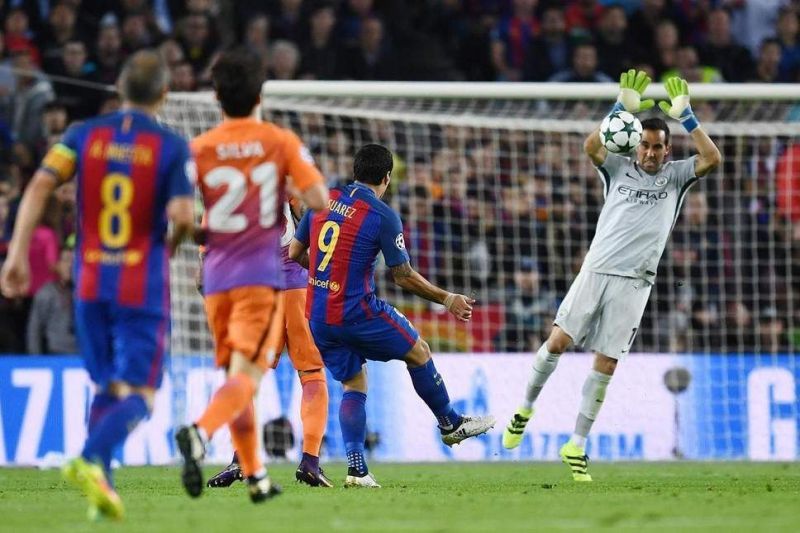
Like every other tactic, it is neither good nor bad but completely depends on how it effectively it is utilized. It is a useful tactic for almost all teams who base their game on build-up and possession football. Its a big risk for the keeper to push high up the pitch knowing he does not have the luxury of using his hands. If executed properly, it is good for even teams who are not reliant on the build up. The goals scored on counter-attacks can decrease rapidly because of this tactic. The time taken to restart the attack also reduces and players save energy by not having to track back and run forward again.
A sweeper keeper helps in improving smaller things but many would prefer to be on the safer side. After all, keepers are more likely to be blamed when conceding due to their presence up the pitch, rather than in a 1v1 situation in their own penalty area. In some cases, it could go horrifically wrong as it did for Claudio Bravo against Barcelona a couple of years ago and even for Manuel Neuer himself against South Korea in the 2018 FIFA World Cup.